Abstract
Leaves of Flaveria brownii exhibited slightly higher amounts of oxygen inhibition of photosynthesis than the C4 species, Flaveria trinervia, but considerably less than the C3 species, Flaveria cronquistii. The photosynthetic responses to intercellular CO2, light and leaf temperature were much more C4-like than C3-like, although 21% oxygen inhibited the photosynthetic rate, depending on conditions, up to 17% of the photosynthesis rate observed in 2% O2. The quantum yield for CO2 uptake in F. brownii was slightly higher than that for the C4 species F. trinervia in 2% O2, but not significantly different in 21% O2. The quantum yield was inhibited 10% in the presence of 21% O2 in F. brownii, yet no significant inhibition was observed in F. trinervia. An inhibition of 27% was observed for the quantum yield of F. cronquistii in the presence of 21% O2. The photosynthetic response to very low intercellular CO2 partial pressures exhibited a unique pattern in F. brownii, with a break in the linear slope observed at intercellular CO2 partial pressure values between 15 and 20 μbar when analyzed in 21% O2. No significant break was observed when analyzed in 2% O2. When taken collectively, the gas-exchange results reported here are consistent with previous biochemical studies that report incomplete intercellular compartmentation of the C3 and C4 enzymes in this species, and suggest that F. brownii is an advanced, C4-like C3-C4 intermediate.
Full text
PDF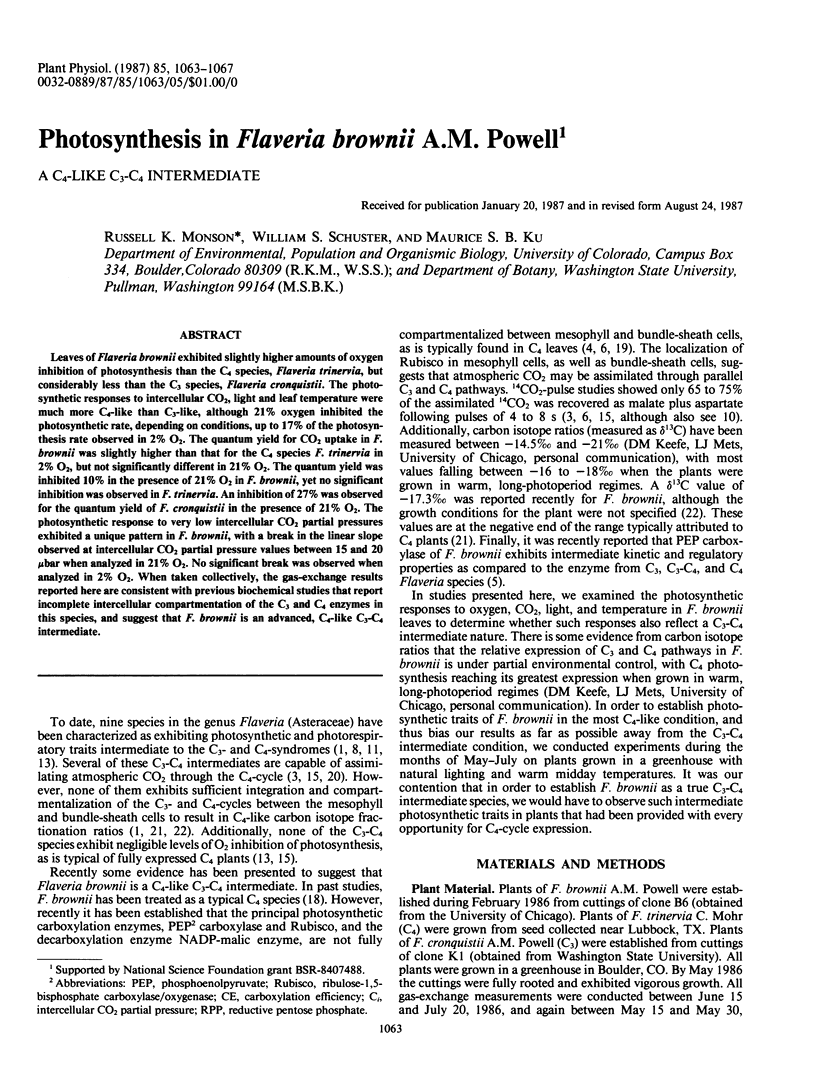
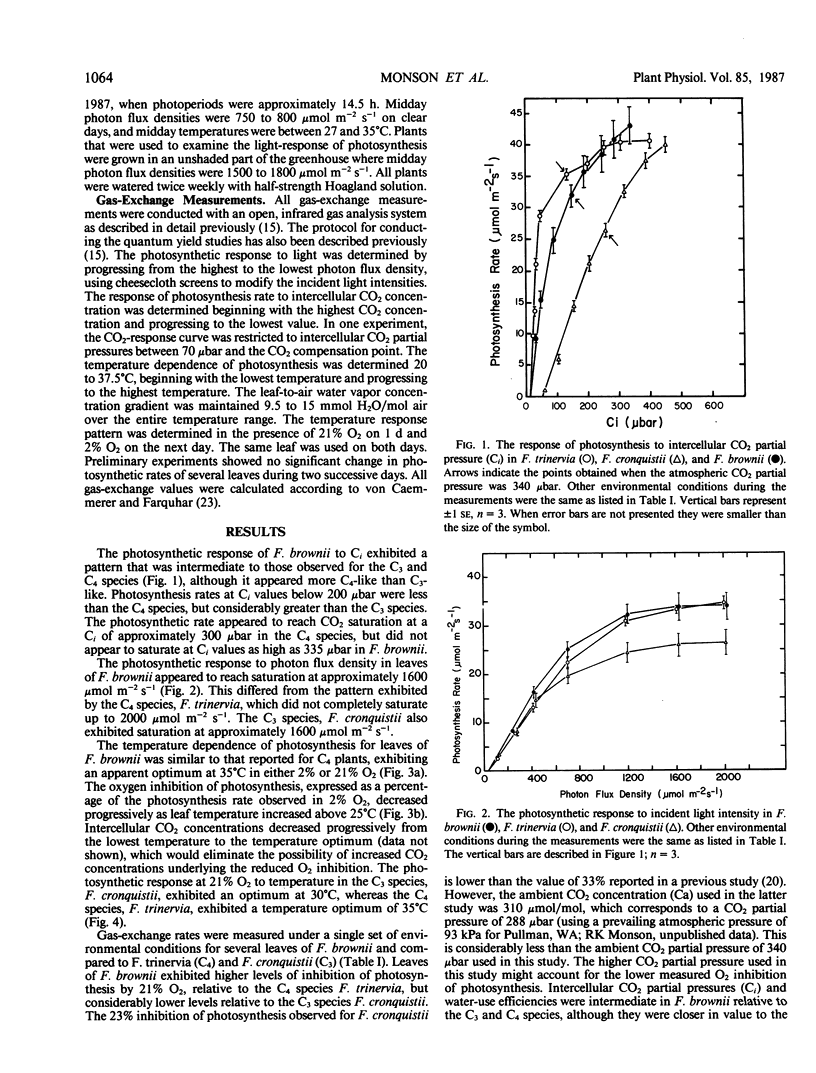
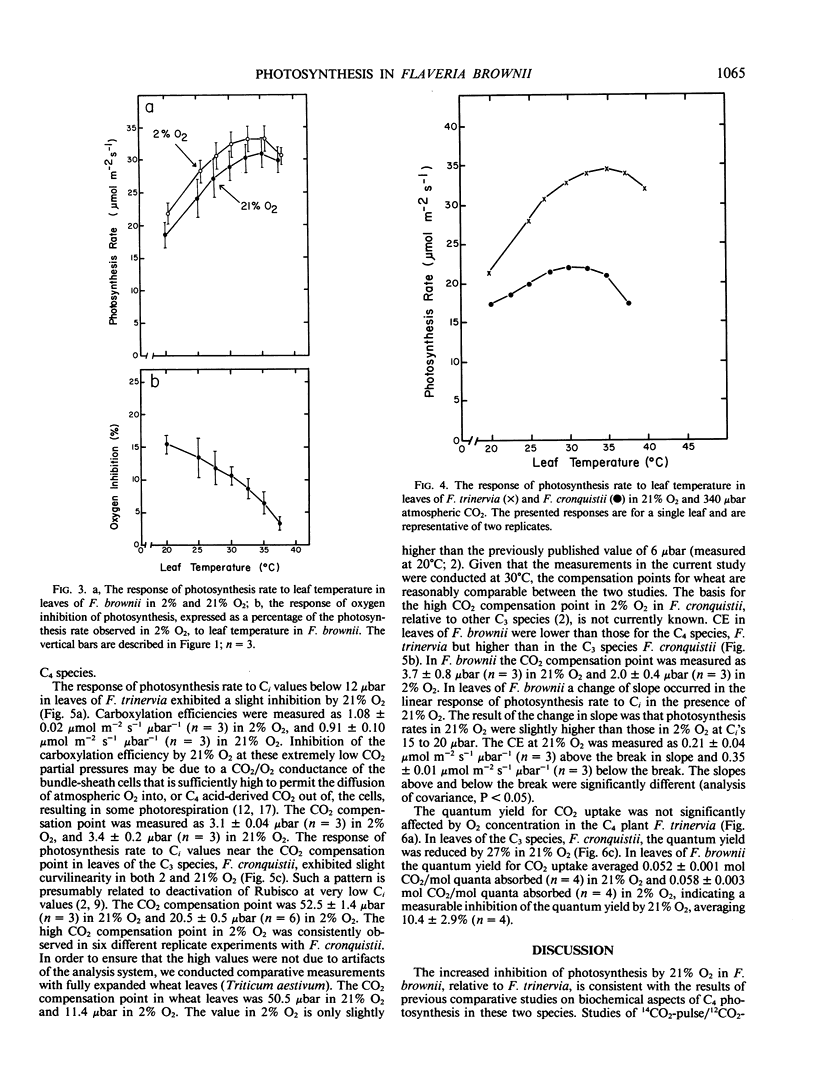
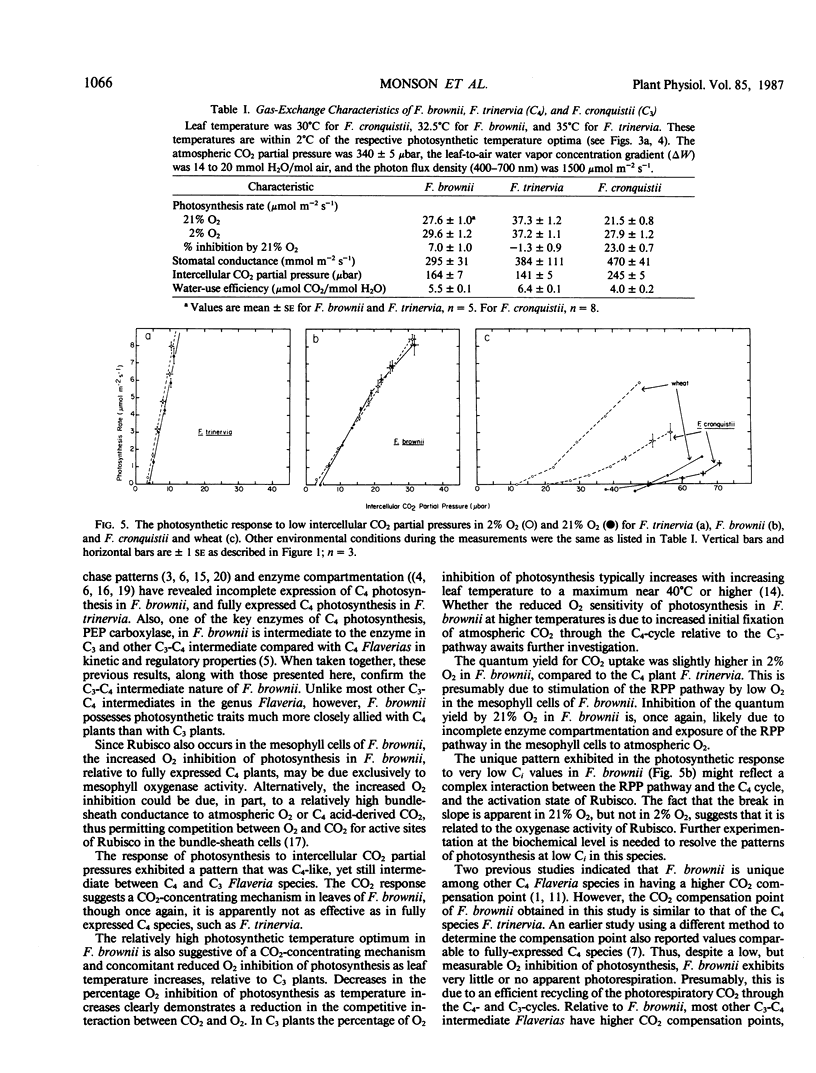
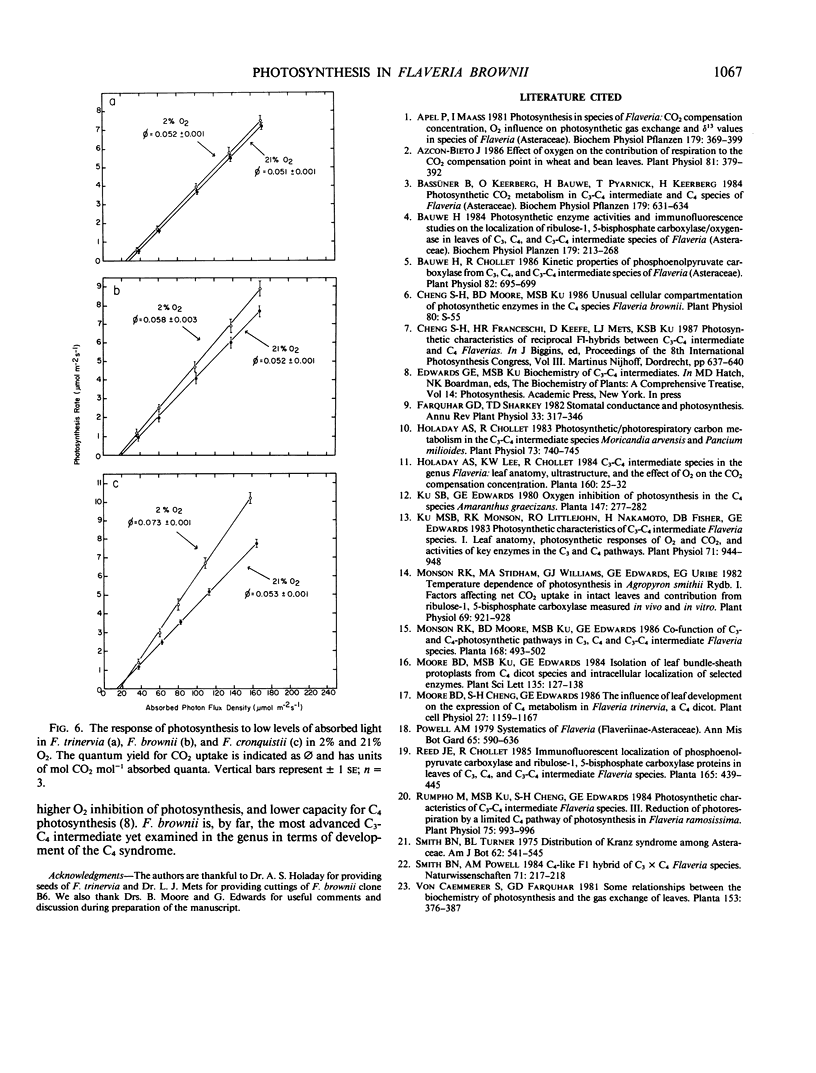
Selected References
These references are in PubMed. This may not be the complete list of references from this article.
- Azcon-Bieto J. Effect of Oxygen on the Contribution of Respiration to the CO(2) Compensation Point in Wheat and Bean Leaves. Plant Physiol. 1986 Jun;81(2):379–382. doi: 10.1104/pp.81.2.379. [DOI] [PMC free article] [PubMed] [Google Scholar]
- Bauwe H., Chollet R. Kinetic properties of phosphoenolpyruvate carboxylase from c(3), c(4), and c(3)-c(4) intermediate species of flaveria (asteraceae). Plant Physiol. 1986 Nov;82(3):695–699. doi: 10.1104/pp.82.3.695. [DOI] [PMC free article] [PubMed] [Google Scholar]
- Holaday A. S., Chollet R. Photosynthetic/Photorespiratory Carbon Metabolism in the C(3)-C(4) Intermediate Species, Moricandia arvensis and Panicum milioides. Plant Physiol. 1983 Nov;73(3):740–745. doi: 10.1104/pp.73.3.740. [DOI] [PMC free article] [PubMed] [Google Scholar]
- Ku M. S., Monson R. K., Littlejohn R. O., Nakamoto H., Fisher D. B., Edwards G. E. Photosynthetic Characteristics of C(3)-C(4) Intermediate Flaveria Species : I. Leaf Anatomy, Photosynthetic Responses to O(2) and CO(2), and Activities of Key Enzymes in the C(3) and C(4) Pathways. Plant Physiol. 1983 Apr;71(4):944–948. doi: 10.1104/pp.71.4.944. [DOI] [PMC free article] [PubMed] [Google Scholar]
- Monson R. K., Stidham M. A., Williams G. J., Edwards G. E., Uribe E. G. Temperature Dependence of Photosynthesis in Agropyron smithii Rydb. : I. FACTORS AFFECTING NET CO(2) UPTAKE IN INTACT LEAVES AND CONTRIBUTION FROM RIBULOSE-1,5-BISPHOSPHATE CARBOXYLASE MEASURED IN VIVO AND IN VITRO. Plant Physiol. 1982 Apr;69(4):921–928. doi: 10.1104/pp.69.4.921. [DOI] [PMC free article] [PubMed] [Google Scholar]
- Muss H. B., Bundy B. N., DiSaia P. J., Ehrlich C. E. Mitoxantrone for carcinoma of the endometrium: a phase II trial of the Gynecologic Oncology Group. Cancer Treat Rep. 1987 Feb;71(2):217–218. [PubMed] [Google Scholar]
- Rumpho M. E., Ku M. S., Cheng S. H., Edwards G. E. Photosynthetic Characteristics of C(3)-C(4) Intermediate Flaveria Species : III. Reduction of Photorespiration by a Limited C(4) Pathway of Photosynthesis in Flaveria ramosissima. Plant Physiol. 1984 Aug;75(4):993–996. doi: 10.1104/pp.75.4.993. [DOI] [PMC free article] [PubMed] [Google Scholar]


